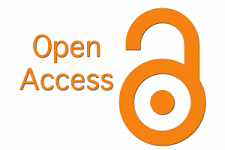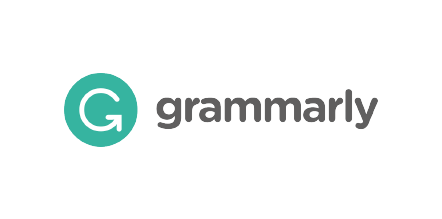Clinical Review of Thalassemia: Kinds, Signs Management, and Globin Structure
Keywords:
Thalassemia, hemoglobin, Anemia, Alpha thalassemiaAbstract
Thalassemia is a blood disease in which the typical hemoglobin is synthesized in minor quantities than normal. It is genetic disease consequently it passed from parents via their genes. Thalassemia patients cannot synthesize sufficient typical hemoglobin, that causes serious anemia. Hemoglobin is present in erythrocytes and transports O2 to all organs of the body. Around the world, there are approximately 30 million carriers in addition to about 10000 babies have thalassemia annually. In fact, two main types of thalassemia are found. These types are Alpha thalassemia which affected by Alpha globin gene and Beta Thalassemia which affected by Beta globin gene. In this review we focus on thalassemia disorder, kinds and its management.
References
Galanello R, Origa R: Beta-thalassemia. Orphanet J Rare Dis. 2010, 5:11-18. 10.1186/1750- 1172-5-11
Shirzadfar H, Mokhtari N, Claudel J (2018) geometric parameters optimization of interdigital micro-electrodes: theoretical analysis. Accepted by Journal of Nano and Electronic Physics
Ameli M, Besharati S, Nemati K, Zamani F: Relationship between elevated liver enzyme with iron overload and viral hepatitis in thalassemia major patients in Northern Iran. Saudi Med J. 2008, 29:1611-1615.
Sharada AS: Thalassemia and related hemoglobinopathies. Ind J Pediatr. 2005, 72:319-324. 10.1007/BF02724015
Brittenham, GM, Patricia GM, Arthur NW, Christine ME, Young NS, et al. (1994) Efficacy of deferoxamine in preventing complications of iron overload in patients with thalassemia major. New England Journal of Medicine 331(9): 567–573
Akhavan H, Derakhshandeh P, Banihashemi A, Mostafazadeh A, Asghari B, Ahmadifard MR, Azizi M, Youssefi A, Elmi MM. A comprehensive molecular characterization of beta thalassemia in a highly heterogeneous population. Blood Cells Mol Dis.2011; 15;47(1):29-32
Martin A, Thompson AA. Thalassemias. Pediatr Clin North Am.2013; 60:1383.
Hemoglobin-alpha locus 1 HBA2. Online mendelian inheritance in man (OMIM) 141850
Hemoglobin-alpha locus 1 HBA2. Online mendelian inheritance in man (OMIM) 141850.
Lukens JN (1993) The thalassemias and related disorders: quantitative disorders of hemoglobin synthesis. Bayl Univ Med Cent 20(1): 27-31
Nigam N, Nigam S, Agarwal M, Singh PK (2015) β-Thalassemia: From clinical symptoms to the management IJCMR 4(5): 1-5.
Papanikolaou G, Tzilianos M, Christakis JI, et al.: Hepcidin in iron overload disorders. Blood. 2005, 105:4103-4105. 10.1182/blood-2004-12-4844.
Vincenzo D, Christos K. β-Thalassemia Distribution in the Old World: an Ancient Disease Seen from a Historical Standpoint” (2017); 9(1): e2017018
NA Al-Allawi, K Hassan. βthalassemia mutations among transfusion dependent thalassemia major patients in Northern Iraq,” Molecular Biology International. 2010; 4.
Makis A, Hatzimichael E, Papassotiriou I, Voskaridou E: 2017 clinical trials update in new treatments of β‐thalassemia. Am J Hematol. 2016, 91:1135-1145. 10.1002/ajh.24530.
Samavat A, Modell B (2004) Iranian national thalassaemia screening programme. BMJ 329(7475): 1134–1137
Aisen P, Leibman A, Zweier J, Zweier L (1978) Stoichiometric and site characteristics of the binding of iron to human transferrin. J Biol Chem 253(6): 1930–1937.
Thalassemia International Federation: Guidelines for the clinical management of thalassemia (2nd edn).
Maton A, Hopkins, McLaughlin GW, Johnson S, Warner MQ, et al. (1993) Human biology and health. Englewood Cliffs, New Jersey, USA.
Steensma DP, Gibbons RJ, Higgs DR (2005) Acquired α-thalassemia in association with myelodysplastic syndrome and other hematologic malignancies. Blood 105(2): 443-452.
Lehmann H, Carrell RW (1968) Differences between alpha and beta chain mutants of human haemoglobin and between alpha and beta thalassaemia, Possible duplication of the alpha chain gene. Br Med J 4(5633): 748–750
Downloads
Published
How to Cite
Issue
Section
License

This work is licensed under a Creative Commons Attribution-NonCommercial 4.0 International License.
You are free to:
- Share — copy and redistribute the material in any medium or format
- Adapt — remix, transform, and build upon the material
- The licensor cannot revoke these freedoms as long as you follow the license terms.
Under the following terms:
- Attribution — You must give appropriate credit , provide a link to the license, and indicate if changes were made . You may do so in any reasonable manner, but not in any way that suggests the licensor endorses you or your use.
- NonCommercial — You may not use the material for commercial purposes .
- No additional restrictions — You may not apply legal terms or technological measures that legally restrict others from doing anything the license permits








